Filter by

History of Landscape Ecology in the United States
Gary W. Barrett holds the Eugene P. Odum Chair of Ecology in the Eugene P. Odum School of Ecology, University of Georgia (UGA). He is coauthor of eight books; and has published over 190 articles in professional journals. Until 1994, he was Distinguished Professor of Ecology, Miami University, Oxford, Ohio. At Miami University he was recipient of the 1986 Sigma Xi Researcher of the Year Award. F…
- Edition
- 1
- ISBN/ISSN
- 978-1-4939-2274-1
- Collation
- XVIII, 194
- Series Title
- -
- Call Number
- 910 HIS
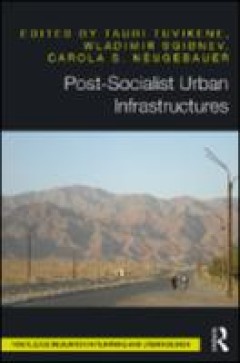
Post-Socialist Urban Infrastructures (OPEN ACCESS)
Post-Socialist Urban Infrastructures critically elaborates on often forgotten, but some of the most essential, aspects of contemporary urban life, namely infrastructures, and links them to a discussion of post-socialist transformation. As the skeletons of cities, infrastructures capture the ways in which urban environments are assembled and urban lives unfold. Focusing on post-socialist cities,…
- Edition
- -
- ISBN/ISSN
- 9781351190343
- Collation
- -
- Series Title
- -
- Call Number
- -
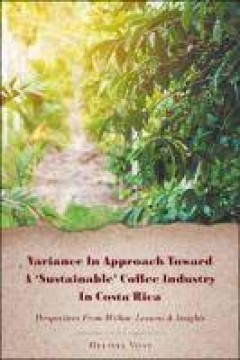
Variance in Approach Toward a ‘Sustainable’ Coffee Industry in Costa Rica…
"The monograph considers influence over time of Fairtrade and Rainforest Alliance in 10 Costa Rican coffee farming communities. In-country perspectives and relevant historic and contemporary literature inform findings. Misaligned intentions to outcomes; different sustainability approaches; and variable influence is observed. There is opportunity to: consider when certifications are most useful;…
- Edition
- -
- ISBN/ISSN
- 9781911529798
- Collation
- -
- Series Title
- -
- Call Number
- -
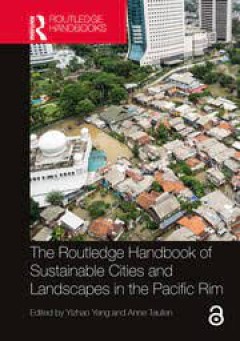
The Routledge Handbook of Sustainable Cities and Landscapes in the Pacific Rim
"This handbook addresses a growing list of challenges faced by regions and cities in the Pacific Rim, drawing connections around the what, why, and how questions that are fundamental to sustainable development policies and planning practices. These include the connection between cities and surrounding landscapes, across different boundaries and scales; the persistence of environmental and devel…
- Edition
- -
- ISBN/ISSN
- 9781003033530
- Collation
- -
- Series Title
- -
- Call Number
- -
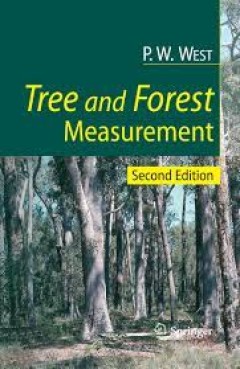
Tree and Forest Measurement
Forests must be measured if they are to be managed and conserved properly. This book describes the essential principles of modern forest measurement, whether using simple hand-held equipment or sophisticated satellite imagery. It particularly focuses on measuring forest biomass over large forest areas, a key aspect of climate change studies, as well as the volumes of wood that are commercially …
- Edition
- -
- ISBN/ISSN
- 978-3-319-14708-6
- Collation
- -
- Series Title
- -
- Call Number
- -

Transitions to Sustainability
This book calls for the conditions of transition to sustainability: How to take into consideration new global phenomena such as and of the dimension of climate change, the depletion of natural resources, financial crises, demographic dynamics, global urbanization, migrations and mobility, while bearing in mind short-term or local place-based issues, such as social justice or quality of life? Me…
- Edition
- -
- ISBN/ISSN
- 978-94-017-9532-6
- Collation
- -
- Series Title
- -
- Call Number
- -

European Planning History in the 20th Century A Continent of Urban Planning
The history of Europe in the 20th century is closely tied to the history of urban planning. Social and economic progress but also the brute treatment of people and nature throughout Europe were possible due to the use of urban planning and the other levels of spatial planning. Thereby, planning has constituted itself in Europe as an international subject. Since its emergence, through intense ex…
- Edition
- -
- ISBN/ISSN
- 9781003271666
- Collation
- -
- Series Title
- -
- Call Number
- -

Impaired Wetlands in a Damaged Landscape: The Legacy of Bitumen Exploitation …
This work is a scientific monograph that examines the flora and vegetation of natural mineral wetlands in comparison to mineral wetlands affected by bitumen exploitation. The work is of broad relevance because (a) wetland loss and degradation is a global problem; (b) the continued global increase in fossil fuel exploitation is resulting in widespread damage; and (c) bitumen (tar sands, oil sand…
- Edition
- -
- ISBN/ISSN
- 978-4-431-55536-0
- Collation
- XI, 218
- Series Title
- -
- Call Number
- 304

Impacts of Land-use Change on Ecosystem Services
This book aims to systematically elaborate how land-use change directly or indirectly exerts impacts on the ability of ecosystems to provide services for human society. The relationship between land use, ecosystem services and human well-being is a hot topic, and there have been some important achievements in this field, but its continuing growth means that it warrants further research. The …
- Edition
- -
- ISBN/ISSN
- 978-3-662-48007-6
- Collation
- IX, 260
- Series Title
- -
- Call Number
- 304 IMP
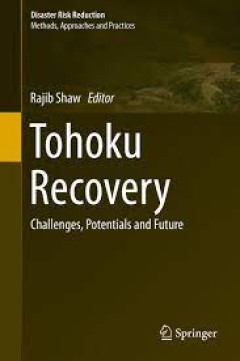
Tohoku Recovery Challenges, Potentials and Future
The March 11 disaster in 2011, known as the Great East Japan Earthquake and Tsunami, caused extensive damage in various sectors. Through the recovery process, special lessons are being learned and applied in the affected region. This book attempts to draw lessons from different issues and sectors such as policy perspectives (both national and local), the role of international NGOs, fishing indu…
- Edition
- -
- ISBN/ISSN
- 978-4-431-55136-2
- Collation
- -
- Series Title
- -
- Call Number
- -
 Computer Science, Information & General Works
Computer Science, Information & General Works  Philosophy & Psychology
Philosophy & Psychology  Religion
Religion  Social Sciences
Social Sciences  Language
Language  Pure Science
Pure Science  Applied Sciences
Applied Sciences  Art & Recreation
Art & Recreation  Literature
Literature  History & Geography
History & Geography